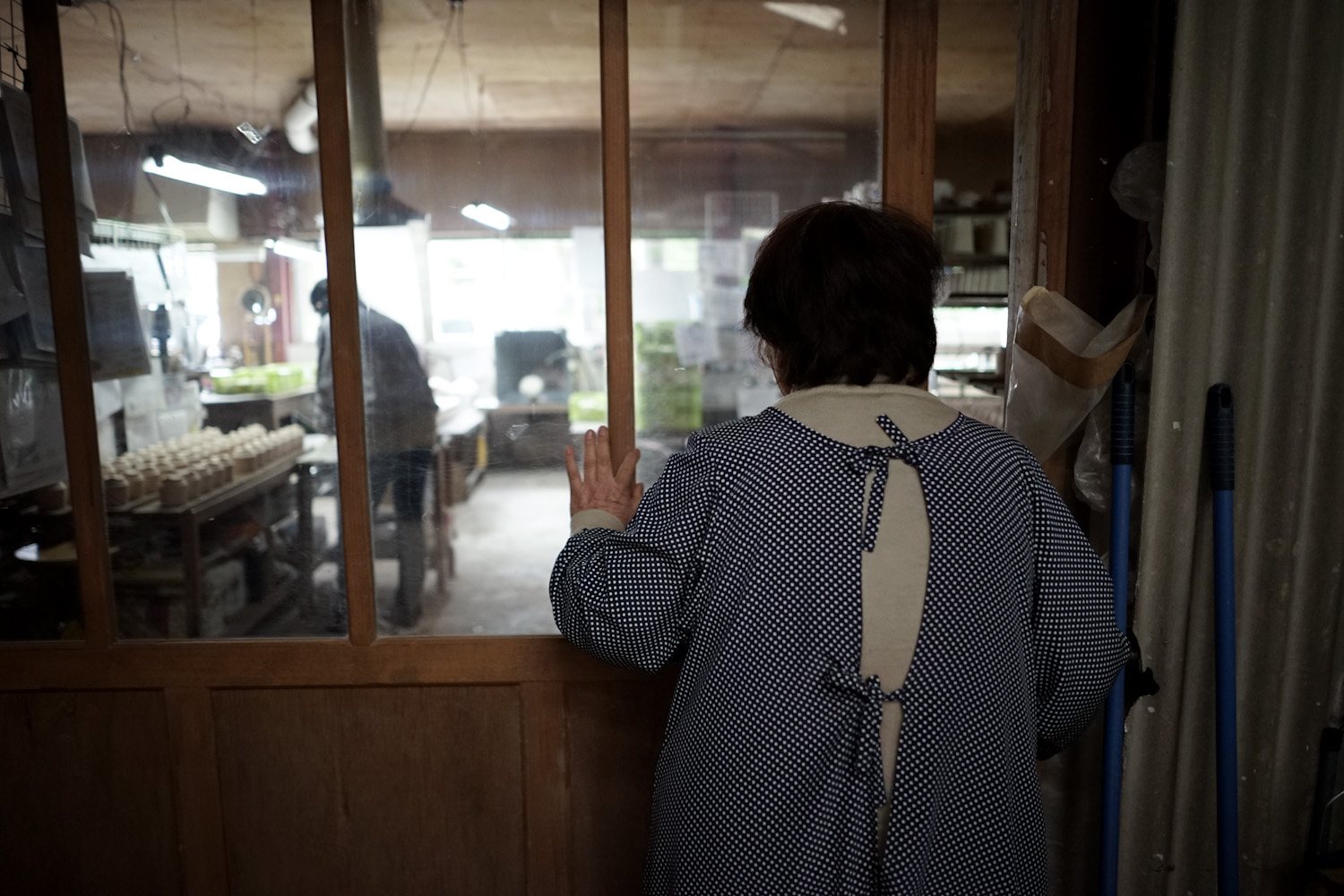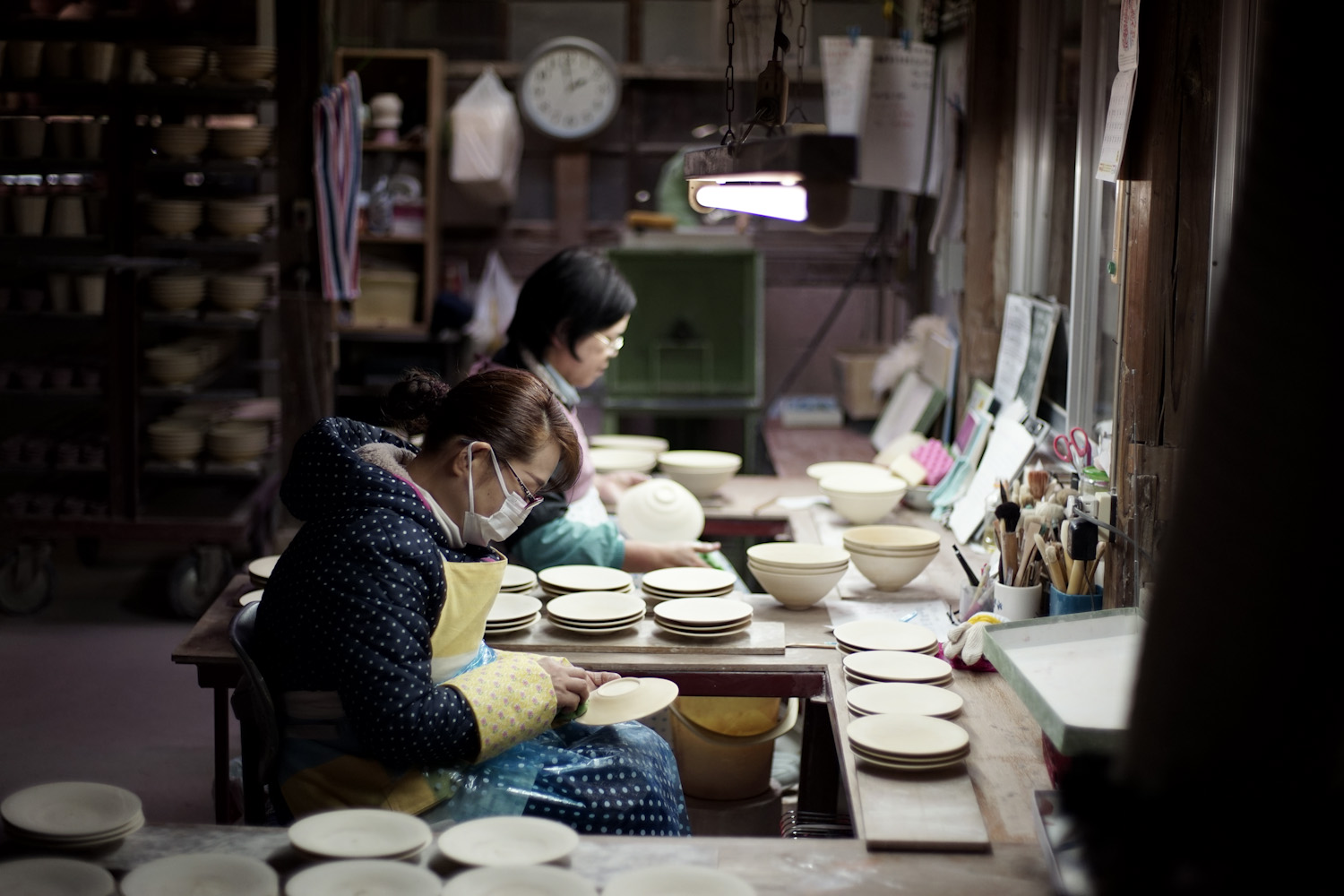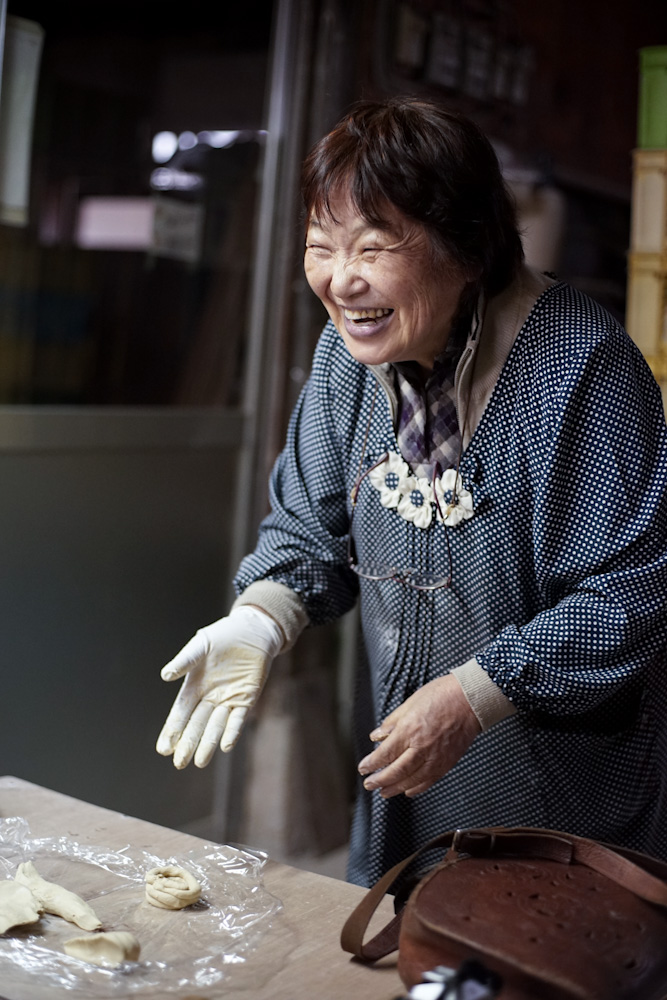THE DOYENNE OF JAPANESE PORCELAIN, ARITA
As always, we were in search of food. After arriving at our guesthouse in Arita, a small village on Japan's southern island of Kyushu, we were waved off by the ancient owner with a hand-drawn map and assurance that a hot bowl of udon was just a 10 minute walk away. We stumbled through the quiet, moonlit streets for, what seemed, much longer than that with no udon in sight. 7-eleven karaage (fried chicken) was looking like our best bet to fight the impending hanger.
Our stomachs were saved by a local family huddled around a glowing bonfire by the river. They called us over, offered us shots of sake and grilled mochi (glutinous rice balls) – a new year tradition – and told us that the infamous udon place was closed for the night. Aiko, a cuddly grandmother-type, started talking to us without breath as if we were her best friends. Nori, a younger neighbour, translated that Aiko wanted to show us her porcelain factory just up the road. Without warning, we were whisked off to see her factory, Aiko chattering the whole walk over.
The factory was beautiful. It was after dark, so the place was empty and still. We weaved through the towering shelves of stacked ceramic plates, bowls, tea cups and mugs, all waiting to be fired. Aiko pointed out the brick kilns, and the drying pottery teetering on wooden beams. The rooms were filled with the smell of clay, dust and paint, and although this was her factory, you could tell there was plenty of history within these walls. With a flurry of hand motions and nods, Aiko insisted that we return to her factory tomorrow, to glaze some of our own ceramics.
We returned the next day to see the factory humming. The ceramics were being polished, glazed stamped and fired, and Aiko rushed around again to show us all the different processes.
She told us to choose two pieces of her raw, unfired pottery and led us to a table with a rainbow palette of ceramic paints, as well as a few books on traditional Japanese glaze patterns. Arita is well known as the birthplace of Japanese pottery, beginning 400 years ago after Japanese daimyo (feudal lord) Toyotomi Hideyoshi was so impressed with the porcelain he had seen in Seoul, he brought back skilled Korean craftsmen to establish a porcelain industry in Japan.
Korean potter Yi Sam-pyeong discovered that Arita’s Izumi mountain was a plentiful source of kaolin, the raw material for white porcelain which would become iconic to Arita ceramics. The Izumiyama quarry was built to mine the stone, and porcelain production grew throughout the country, with Arita becoming the major hub of the craft. Arita porcelain became known as aritayaki or imariyaki, as the porcelain was traded through the port of nearby Imari.
Suddenly, we were being trundled into Aiko's car. She weaved through the small cobblestone streets of the town becoming our unofficial tour guide, pointing out Arita's sights and landmarks along the way. We did a drive-by past the Kyushu Ceramics Museum and the neighbouring ceramic shops, before finally pulling up to the Izumiyama quarry. A large, vacant landscape that shows the huge excavation of the stone. While most of her conversation was lost on us, her passion for the town and her craft was hard to miss.
Images: Leigh Griffiths
Words: Eloise Basuki
All words and images are under copyright © 2019 strangertalk.co











